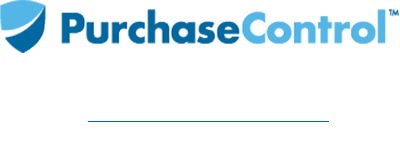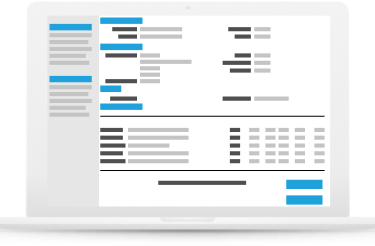The purchase order reconciliation process, commonly known as PO recon, is the process that closes purchase orders that meet certain criteria. This includes POs that have been fully vouchered, and matched, as well as POs where the due-date has passed. If there are any POs that have had no activity for a certain time-frame, they will be marked complete.
Before running the process, the procurement department should notify the rest of the company of the schedule, criteria, and the list of the POs that will be completed for review before the PO reconciliation begins. Most organizations plan to run PO recon a few times a year.
How to Reconcile Purchase Orders with Invoices
Reconciling purchase orders with purchase orders ensures everything is accurate between what the vendor charges you and what you received. Reconciliation requires matching the line items on the PO to the line items on the invoices.
If you intend to handle this manually, you’ll want to prepare to keep things organized. Organize the vendor invoices for by date.
Take a close look at the line items on your purchase orders compared to the line items on your invoices. It’s best to reconcile the invoices as the shipments arrive, so your invoices should include the correct count and dollar amount of each shipment. You’ll also want to have goods received reports so available so you can compare those line items. This ensures you’re only paying for goods you’ve actually received.
Place check marks on any matched items. When the invoice matches the line item on the purchase order and the goods received, you know it’s okay and can move on. If you run into any line items that don’t match – such as ordering 10 widgets, and only receiving 8, but being billed for 12 widgets, highlight those inconsistencies. Make a note of these issues and reach out to the vendor for assistance with correcting the error.
Ideally, your organization uses an e-procurement system that features a three-way matching process. This reconciliation process matches the buyer’s purchase order to the seller’s invoice, and the inventory receiving documents or packing slip to ensure that what is ordered matches what is received and matches what is paid for.
This three-way matching process helps to prevent a number of issues, such as paying for fraudulent or incorrect invoices, paying for product not received, and son on. It helps to authenticate valid invoices for immediate payment.
Variations of the three-way match order-to-invoice process are widely used without automation. However, this approach is time-consuming and has plenty of error potential because someone has to collect and compare the documents manually as part of the reconciliation process. Because of the fact that documents can get lost, it’s easy to pay the wrong price, for the wrong quantity, or the wrong shipping costs. If reconciliation and payment do not happen fast enough, it’s possible to miss out on early payment discounts. Those human errors and mistakes can be costly – and happen in multiple places throughout the process.
“Manual processes take too much time and leave plenty of room for mistakes. Without regular audits to help balance the books, your business could be losing thousands of dollars a year (or more) due to PO recon errors.”
Using an Automated Purchase Order Reconciliation Process
If you’re already using an e-procurement system that’s integrated with other systems via your company’s enterprise resource planning (ERP) systems, you can easily automate tasks to generate a reconciliation report.
With automation in place, all purchase orders and related documents are standardized to match all requirements for easy electronic exchange. Documents including purchase orders, purchase order acknowledgements (POAs), advanced ship notices (ASNs), and invoices can be sent directly with software and tools you’re already using.
For example, a purchase requisition is assigned its own number in the system once it’s created. When approved and converted to a purchase order, it gets its own purchase order number that connects it to the original requisition document. When the invoice comes in, it’s assigned an invoice number. When the order comes in and goods are marked received, the system can run through everything quickly to make sure everything matches as it should.
With PurchaseControl’s three-way matching process, transaction reconciliation and payment processes are greatly simplified. When matches occur in the system, all documents that match for payment are automatically approved. Any that do not match are placed aside for manual review.
Benefits of Process Automation
Automating the three-way match helps your supply chain become more agile. When the accounts payable department manually processes payments, it’s more difficult to capitalize on opportunities that could help save money. Closing your purchase orders out faster gives you a clearer picture of what’s available to spend, which can help in planning additional purchases.
Ultimately, automating this process can increase your profit margins, without making any major changes to your operations. Experts estimate retail organizations spend anywhere from $120 to $150 per purchase order on things that could be prevented – such as tracking down paperwork that’s gone missing, paying fraudulent or incorrect invoices, remedying inventory errors, delays as a result of manual receiving processes, and so on.
For a retail organization that sends out 100,000 purchase orders over the course of a year, that’s $12 million to $15 million (or more) in lost revenue and opportunities. While automating the reconciliation processes won’t be able to fix all your organization’s money problems, it can reduce them and possibly eliminate issues throughout your purchase-to-pay process.
When you opt to automate the reconciliation process, your accounts payable department doesn’t have to spend as much time chasing invoices and comparing them to purchase orders and shipment receipts. Instead, they can focus on getting invoices paid in a timely manner, allowing the procurement team to negotiate better payment terms and early payment discounts to improve overall cash flow.
PurchaseControl makes it easy to reconcile your purchase orders against invoices.
Find Out How








